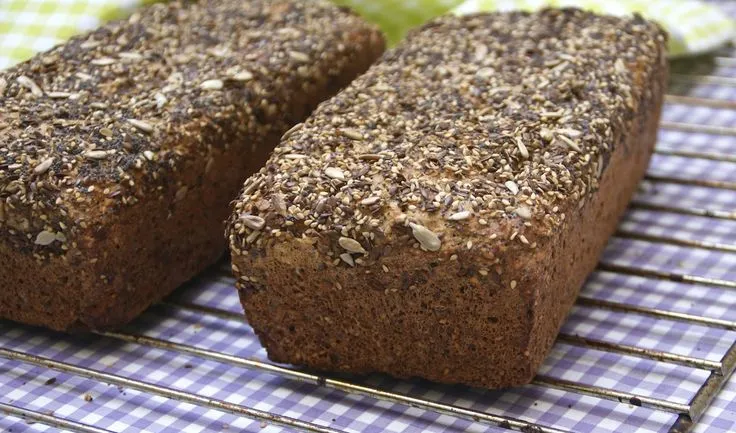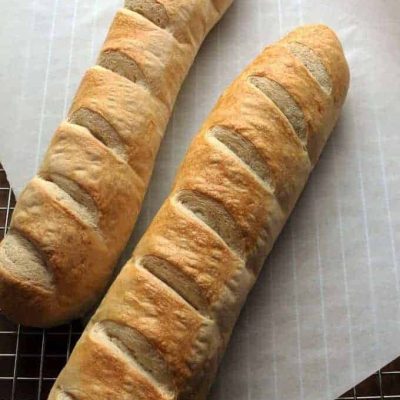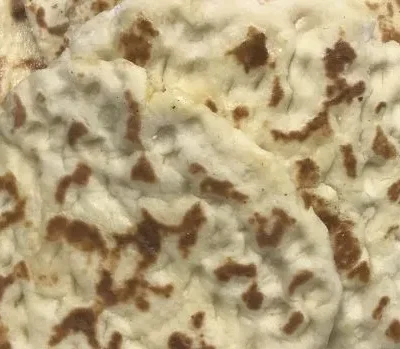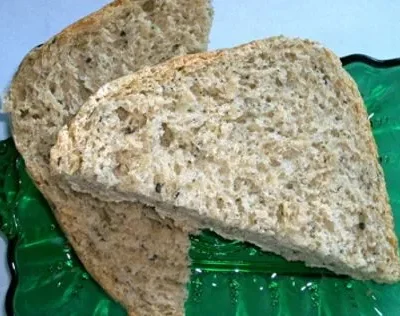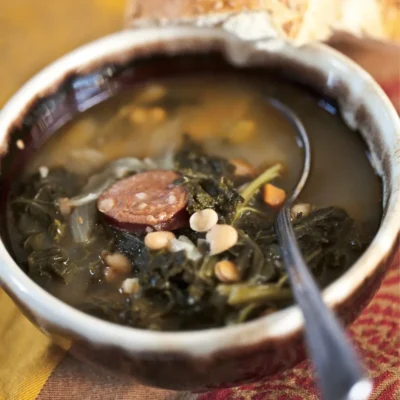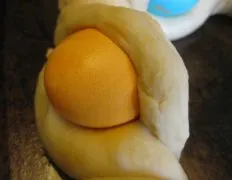Ingredients
-
3
-
1/2
-
1/2
-
2
-
12 - 13
-
-
-
-
-
-
-
-
-
-
Directions
Zurie’s Overnight No-Knead Bread,After posting this recipe, and making the bread at least 3 times a week, I have simplified the rising process, and eliminated the messy parts. The original recipe comes from baker Jim Lahey of the Sullivan Street Bakery, and has been discussed on Zaar. I have tweaked it a bit, and this is the closest I can come to those French “boules”. It is real BREAD bread, not chemical cottonwool. All you need is time. The instructions are terribly long, but once you’ve read through it, you will see it’s only to make the already-easy process still easier. Now you only need hunt up a suitably heavy pot with lid … This is the best bread I’ve eaten in years. UPDATE, 13-8-07: Decided to try and use 4 cups flour to get a fatter loaf. It worked, and with the same smallish pot I got a lovely loaf. This 2nd recipe is tacked on to the instruction list. Good luck! By the way, if you want wholewheat bread, don’t use this recipe. Rather use your bread machine or your normal way of bread-making. This very French-style loaf should be made from white bread flour, and you can add in a little fine rye flour. Sometimes I add 1 cup of “brown bread grain flour” which is very finely stone-milled, and has no large bran flakes. But basically, this is a white bread. Go on, indulge! Slice a piece for yourself when you can handle it and the crust is still crunchy-hard … Heaven!,I’ve made this many times and never greased the pot/pan, and it has never stuck. It’s pops right out, actually slides, use a combination of pots, and I split the dough into two, better for us, then I freeze one, besides putting butter in a pot and heating it to that high of a temperature just makes a lot of smoke and there is no need… I have heard of putting some parchment under the loaf as it is rising, then when your’e ready to put into the super hot pot, you can transfer the whole thing, paper and dough, it makes it easier, but, usually I just plop it in the pot and no matter how it lands, it always turns out great. Most of the pots use to bake with are cast iron, some enamel clad, some not, and sometimes use an old vintage clear Pyrex covered dish. Anyway, hope my suggestions are helpful.,No need for oil, butter in the pot..
Discover ground-breaking new supplements! SHOP & SAVE
Steps
|
1
Done
|
*** Since First Making This Bread According to the Original Instructions (which Caused a Lot of Mess), I've Simplified the Process. I Have Now Bought a Fairly Deep Plastic Bowl With Sloping Edges, So It Has a Smallish Bottom. the Plastic Seems Almost -- not Quite -- Non-Stick, and This Is the Method use Now: |
|
2
Done
|
in Such a Lightly Greased Plastic Bowl, Put the Flour, and Add the Yeast, Sugar and Salt. You May Want to Add Less Salt, but We Found the Original Amount (1 1/4 Teaspoon) not Enough. Mix Through. |
|
3
Done
|
Add the Water and Stir the Lot Through Until Well Mixed to a Nice, Smooth, Quite Sloppy Dough. |
|
4
Done
|
Cover Bowl With Plastic Wrap and Put a Kitchen Terry Towel or Two Over the Top as Well. Stand in a Draught-Free Place For 18 Hours. |
|
5
Done
|
For Me It Works Best to Mix This Up at 3pm. This Means the Dough Is Ready at 9am the Next Morning and I Don't Even Have to Get Up Early Like My Grandmother Did to Bake Those Huge Farm Loaves in the Old Days. |
|
6
Done
|
After 18 Hours the Dough Should Be Puffy and Have Little Bubble Holes on Top and Have More or Less Doubled in Size, but Don't Worry Too Much About That. |
|
7
Done
|
Instead of -- as the Original Recipe Said -- Turning Out the Dough on to a Towel, Do the Following: from the Sides of the Bowl, Scrape the Dough Away With Light Movements and Fold It Over on Itself With Floury Fingers. Turn the Bowl Round and Round, Flattening the Dough by Repeating This "folding Over". Lightly Press a Little Flatter. |
|
8
Done
|
Cover Bowl With Same (now Messy) Plastic Used Before, and Same Terry Towels. |
|
9
Done
|
Leave to Rise Again -- 2 Hours Long. |
|
10
Done
|
Half an Hour Before the 2 Hours Are Up, Put Your Oven on 450 Deg F/220 Deg Celsius. (i Find That in My Convection - Fan - Oven I Can Use a Slightly Lower Heat: 215 - 210c, but the Difference Is not Important). |
|
11
Done
|
at the Same Time You Need a Heavy Pot With a Fitting Lid, and This Will Go Into the Cold, Heating-Up Oven, Empty. the Lid Is to Keep in the Steam and Cause That Wonderful Crust to Form. |
|
12
Done
|
Nothing Beats an Iron Pot. Le Creuset Will Do Too, and Ceramic Has Been Mentioned. |
|
13
Done
|
use a Non-Stick Oval-Shaped Iron Pot With a Domed Lid. You Do not Need a "6 - 8 Quart Pot" (sounds Crazy to Me) as Stated in the Original Recipe. It's a Small Bread. My Iron Pot Is a 2 1/2 Quart Pot, Which Translates to Roughly 2 1/2 Litres as Well. |
|
14
Done
|
I Grease the Pot and Lid With Real Butter, and Sometimes I Slosh in Some Olive Oil. I Don't Know Why, but I Feel I Should Do It. Now Put the Pot in the Oven, Lid On. |
|
15
Done
|
After the 2 Hours of the 2nd Rising, and When the Oven and Pot Has Reached Its Correct Heat, Take Out That Piping Hot Pot Very Carefully (i Put It on One of My Oven Grids on a Granite Surface Next to the Oven). |

